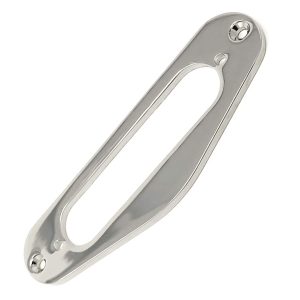
- Heavy Duty Nickel Finish
- Metal Single-Coil Pickup Mounting Ring In Nickel Finish
- High-Quality Metal Single-Coil Pickup Flat
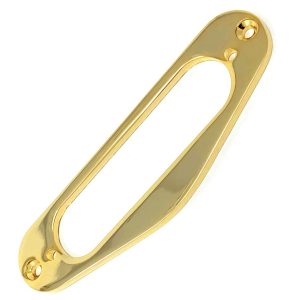
- Heavy Duty Gold Finish
- Metal Single-Coil Pickup Mounting Ring In Gold Finish
- High-Quality Metal Single-Coil Pickup Flat
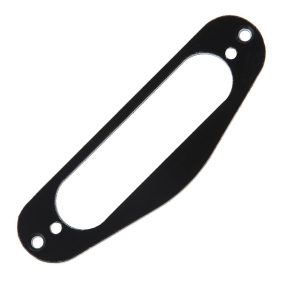
- 3 Ply Construction
- Material – ABS / Plastics And Composite Body Material
- Mounts To Guitar Body With No Pads Or Pickguards Required
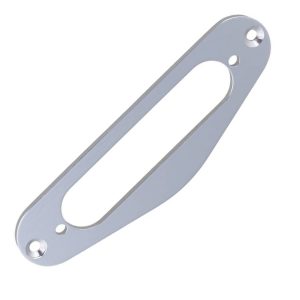
- Aluminum Alloy Material
- The Holes Are Cut To Fit Sized Pickups
- Features Two Countersunk Mounting Holes
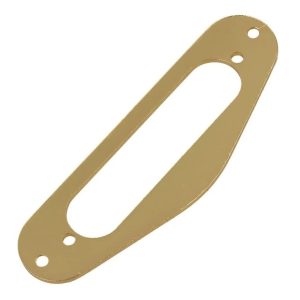
- Aluminum Alloy Material
- The Holes Are Cut To Fit Sized Pickups
- Features Two Countersunk Mounting Holes
Choose the Best Single Coil Pickup for Metal
Customer’s Choice: the Best Rated Single Coil Pickups for Metal
30 users answered this survey. Please help us improve this review!
Table of Contents
Best Single-Coil Pickups for Metal – Buyer’s Guide
Many factors can influence your electric guitar sound. In addition to electric guitar amplifiers and effects devices, these include pickups, which are located between the guitar neck (fingerboard) and the bridge. The most common pickup models are the single-coil pickup and the humbucker pickup, which are found on most electric guitars.
True single-coil pickups work, as the name suggests, with only one coil and, in addition to a characteristic sound, which will be discussed later, also have the negative side effect of the well-known single-coil hum, which can quickly get on your nerves. The best-known representatives are probably the so-called Strat pickups and those of the Telecaster. In real single coils, six-bar magnets, with north at the top and south at the bottom (and vice versa, depending on the polarity), are pressed between two vulcanized fiber plates, resulting in the coil former (bobbin). The winding wire with several thousand windings is now fed between these plates, and the beginning and end of the windings are soldered to soldering sleeves, to which the connecting leads are also attached (see diagram). A single-coil sound is usually rich in treble and brilliant and stands for the famous “twang.”
How it works
Pickups convert the strings’ vibration with the help of one or two coils into an electrical signal, which is then transmitted to the amplifier through various effect pedals, if necessary, and reproduced amplified through speakers.
Interesting facts
Over the decades, technology and music continued to develop, so that more and more variants of the classic pickup came on the market, which strongly influenced the sound of certain musical genres. For example, the first electric guitars were developed when jazz’s sound changed, and simple acoustic guitars could no longer compete with the volume of large bands with piano and wind instruments.
Single-coil
The single-coil pickup is the forerunner of the humbucker, which was used as early as the mid-1930s.
Technology and Function
To better understand how a single-coil pickup works, a little physics is required. As the name suggests, the single-coil pickup is a pickup that consists of a single magnetic coil. However, usually, several magnets are wrapped by a thin wire. The permanent magnetic field created by the current connection in the coil is used to magnetize the strings.
If you set them in vibration by playing them, a current is induced. This means that the influenced magnetic field generates an electrical voltage in the strings. A connected amplifier now converts this voltage into an acoustic signal, and you finally hear the desired tone.
However, signals that can interfere with the single-coil magnetic field (for example, monitors and fluorescent lights) can cause an unwanted hum in conventional single coils. However, in recent years, models have been developed that can eliminate this noise without greatly affecting the typical single-coil sound.
Sound character
The sound of a single-coil pickup can be described as clear and transparent. The almost flashy sound comes from the treble content that can be attributed to the single-coil pickup for metal. Therefore, the use of a single-coil is excellent for quieter passages. Especially in jazz, metal, and funk, single-coil pickups are often used.
Compared to the humbucker, it provides a sound that is richer in the treble, more transparent and “more direct,” known as “twang,” which made it a popular pickup, especially among guitarists from the blues, soul, country, or surf music genre, and significantly shaped their sound.
Special variants of the single-coil are, among others, the lipstick pickup, which produces a treble-rich, “wiry” sound, and the P90, whose sound is warmer and richer in the middle than that of a conventional single coil and thus stands sonically between single-coil and humbucker.
Advantages and disadvantages of a single-coil pickup
A single-coil pickup is unfortunately sensitive to interference from extraneous signals. For example, noise from monitors, laptops, various power sources, etc. can also be picked up and amplified by the pickup. This manifests itself in undesirable low hum or high buzz, which, depending on the recorded noise source’s strength, can become very loud and negatively affect the sound.
However, a so-called noise gate can reduce or even completely prevent this effect if used correctly. This is nowadays already integrated with most amps but can also be switched on by an external effect device. Due to a single-coil pickup’s low output power, overdriving or distortion of the acoustic signal is prevented.
Single-Coil vs. Humbucker: Comparison & Differences
Humbucker
The humbucker (“hum suppressor”) is one of the most commonly used pickups, developed in the mid-1950s. It consists of two single-track pickups (“single coils”), which are usually connected in series, more rarely in parallel. The latter humbucker variant is ideal for you if you prefer a somewhat treble-heavy sound.
Technique and function
The basic principle of the humbucker pickup is exactly the same as the single coil. A magnetic field induces a current in the vibrating strings and reproduces it as an acoustic signal. However, in this case, two magnetic coils are connected in series in one component. However, these are wound in opposite directions. The resulting opposite-pole magnetic field is able to cancel out incoming signals from outside. Due to the resulting noise-canceling effect, there is no annoying noise such as hum or buzz, often with single-coil models. Incidentally, it came during the pickup production, so also to the name, because humbucker translated in principle means nothing other than noise suppressor.
The special design suppresses noise that can be caused by electronic devices. Another effect is the warm bass and midrange-rich sound and higher output power, which allows the amplifier to be overdriven faster.
Sound and tone character
A humbucker pickup produces a fat and punchy sound. The muffled sound is based on the mid- and low-heavy characteristics of the pickup. For distortion sounds or noise-prone effects, the humbucker achieves the ideal effect. Thanks to it, the listener is almost blown away by the cabinet. This is one of the reasons why humbucker pickups are preferred in heavier genres such as rock or metal. Whether fat riffs or whistling tones are desired, a humbucker makes it possible.
Advantages and disadvantages of a humbucker pickup
Due to the stronger transmission of the sound signal, humbucker pickups tend to distort or overdrive the sound. However, in harder music genres like metal, this is often a desired side effect that can contribute to the sound’s advantage. As already mentioned, however, all external noise is usually eliminated.
Special form: Single Coil Humbucker
In addition to the classic humbucker, which consists of two single-coils located next to each other (usually in a common housing), so-called “stacked humbuckers” have been developed in recent years in which the two coils are arranged on top of each other. Due to this design, they suppress hum and other ambient noise like a humbucker but fit into a conventional single coil cutout.
Pickup position: neck, middle, and bridge
In addition to the model itself, its positioning on the electric guitar is also crucial. Depending on the pickup’s position under the vibrating string, certain frequencies are amplified or attenuated in the signal path.
If the pickup is closer to the fingerboard, warmer and softer sounds can be produced. If, on the other hand, the pickup is positioned closer to the bridge, punchier and more powerful sounds can be extracted from the instrument.
The advantage here is that completely different sounds can be produced with one and the same guitar. Typically, electric guitars today have two or three pickups that can be selected individually or together with the help of a selector switch (pickup switch), which allows them to deliver a wide range of sounds.
Order and arrangement
- Neck position (Neck position)
- Middle position
- Bridge position (Bridge position)
- Pickup adjustment
The smaller the distance between the string and the pickup, the stronger the guitar’s output volume. On some models, the distance between the individual magnets (called polepieces) can be adjusted individually so that the volume of each string can be changed individually.
Distance between pickup and guitar strings
As a rule, the closer the pickup is to the strings, the better the guitar sounds. However, if the distance is too close, you may get a clang as the string touches the pickup while vibrating – a smaller distance results in a sound that is richer in overtones. Depending on the pickup, this can also sound unpleasant, which is why care must be taken to ensure that the distance is not too small, especially with single-coils!
Depending on the manufacturer, the way in which the height of the pickup can be changed differs. Some manufacturers make millimeter specifications for the optimal sound. The respective string is pressed in the last fret, and the distance between the top of the pickup (or polepieces) and the bottom of the pressed string is read with a ruler to measure the distance correctly.
Passive and active pickups
Active pickups have a preamp (preamplifier) that amplifies the output signal, which requires additional power, usually from a 9-volt battery. Due to their design and lower output, which is amplified by the preamp, active pickups react less strongly to noise generated on the jack cable’s signal path.
The resulting sound is clearer, more treble-heavy, and more assertive. This makes them the optimal pickups for styles where a powerful, distorted sound is desired, and attack details are relegated to the background – i.e., metal, hard rock, etc.
On the other hand, passive pickups are more dynamic, responding more to variations in the attack, allowing for more nuanced guitar playing. Their sound is thus better suited to classical genres of guitar music.
Pickup combinations: SSS, HSS, etc.
The times in which both pickup concepts were clearly separated from each other are long gone. New and innovative pickup combinations (positions) provide electric guitars with modern sounds without discarding old proven pickup combinations.
- T-Models: Popular is the combinations SS (e.g., the USA-Tele with 2 V-Mod Single Coils) and HH (e.g., the Fender Player Series Tele with 2 New Player AlNiCo II)
- ST models: Popular are the combinations HH, SSS and HSS
- Single Cut models: Popular is the combinations HH as well as P90 + P90
Adjusting the pickups
Is there a standard setting for pickups? One of the most common questions, to which there is no clear answer because the distance to the strings is a very individual thing, and it makes no sense to recommend fixed values here. Since pickups are usually very easy to adjust, it makes the most sense to gain your own experience and then adjust according to your own taste.
The closer the pickup is to the strings, the more direct, biting, and with stronger output, the signal is passed on. The further away it is from the strings, the milder and rounder the tone will be.
Humbuckers, especially bridge versions, maybe screwed quietly to very close to the strings, depending on your preference. With the neck humbuckers, the distance should be somewhat greater since there are usually significantly more basses on the way. There the string vibrates much further than near the bridge. That’s why neck pickups are usually wound weaker, to compensate for these differences between neck and bridge position or to be able to achieve optimal results at both positions.
With single coils, the neck pickup, in particular, should be considered very carefully since the string attraction caused by the magnets – in the case of humbuckers, the visible pole screws and pole pieces are not magnets – is significantly greater and can quickly lead to strat-itis (distorted tone) or string chatter, especially at the neck position.
If the sensitive positions are adjusted, it goes to the other pickups, because here it depends also still on the combination sounds, i.e., pickups connected together, e.g., the LP intermediate position or the typical Strat intermediate positions, because also these sound differently, depending on how the involved PUs are adjusted in height.
My tip: Use a screwdriver with an imprint or marking and count and write down the number of turns of the screwdriver with each adjustment, so that you can, for example. Return to the old starting position at any time. This will make this trial and error more stress-free, so screw, write down (or remember), play and listen, and screw on or back.
Magnet materials
In the field of guitar pickups, the following types of magnets are primarily used: Alnico 4, 3, 2, 5, 8, and various ceramic types. These magnet types differ on the one hand by their different power/strength, but even more crucial are the sound differences when comparing the different types in the same pickup. The power order is as written above, so 4 is the weakest, followed by 3, 2, 5, and 8, with number 8 already being quite a powerhouse. In terms of performance, it is in the range of ceramic magnets but has the typical warm pithy Alnico character, making it a very interesting magnet type.
- Alnico 4 – Very weak, very mild, somewhat narrow, but pleasant imaging
- Alnico 3 – Very warm sounding, with a small, subtle bit of bite right at the top of the treble, bulbous, stable, and extremely smack
- Alnico 2 – overall a bit slimmer than Alnico 3 and not quite as stable in the lows, also very fine mild highs and very musical tone, as is Alnico 3
- Alnico 5 – the classic, more pithy, tighter than A4, A3, A2 with more bite in the highs and less compression
- Alnico 8 – the powerhouse, very powerful output, tighter than Alnico 5, but still with the typical Alnico tone Ceramic – the magnet when it comes to a lot of output and transparency, tight, gripping, and with bite
These are only tendential directions because, in conjunction with unusual pickup designs with appropriate windings, one type of magnet can also lead to a slightly different result than described above. These characterizations apply if you comparatively test the magnets in the same pickup.
Measured values, manufacturer’s specifications
A controversial topic, that’s why I describe this explicitly as my personal experience.
With some manufacturers, you can find extensive specs, resonant frequency, bass/middle/treble, output, etc., but these specifications have never helped me to find a suitable pickup that fits my sound idea. For output specs, it can be a little help if I compare pickups from the same manufacturer. But how these compare to those of other manufacturers, that hardly reveals itself from it. Resonant frequency: In the 90s, I once bought a pickup that was just right in this respect on paper, but in reality was a bitter disappointment. I would see it as small support, especially if you are with the same manufacturer because then such information can be helpful, but I do not trust them more.
Resistance values: They should be taken with caution because they are not always directly related to output and power and should rather be taken as a rough guide because normally, this value is directly related to the number of windings. If you know which wire was used and if the same wire is used in the comparison model, you can roughly go by it for simple single coils or PAF types. A 7k single-coil should already be more powerful than one with 5.6 k if both are equipped with the same magnets. So eyes open, roughly estimate the resistance, then the magnet used, then you can give an approximate forecast (very roughly), how this pickup could sound, the whole in conjunction with the description of the manufacturer.
It is still best to collect personal experience or to exchange with competent people who could collect some experience. Or play at friends their new pickups, borrow the guitar, etc.
There are no rules for the combination of pickups. What you like is allowed. In case of doubt, you should consult specialists who can point out peculiarities, advantages, or disadvantages of a combination.
Hum – Interspersion
Single-coils hum and not everyone likes that. Alternatives offer hum-free variants, but they do not always bring the desired sound. Dummy coils can also be an option, but they also change the sound. It sounds a bit duller and no longer as crisp.
Interference is always a side effect with guitars, just like noise, an unclean signal, all things that we don’t necessarily want to unleash on our audience through the system. We may have to live with some of these noises, like the single-coil hum when we play with real single-coils, but some of them can be reduced or even completely eliminated by professional shielding measures.
First of all: The normal single coil hum is not changed by shielding measures. At best, it is reduced somewhat.
The greatest effect of very good shielding is in the area of higher-frequency noise, i.e., hissing, sizzling, buzzing, etc., noises that we are all familiar with. Exactly these noises could be reduced very well by professional shielding so that after such a modification, we then have a much quieter instrument in our hands if it did not have any shielding before.
With some instruments, the difference between “touching metal parts” and “not touching” is very audible and can also lead to personal playing style problems if the hands are often completely away from the metal parts. Here, good shielding can work so well that no difference is audible, so there is always the same silence as with fingers on the metal.
Many currently manufactured guitars are already very well shielded from the factory, but often it is the expensive custom store instruments that do without shielding while preserving the old models. This can be very disturbing under certain circumstances. Here only an appropriate after-treatment helps to ensure silence. The best thing to do is to ask your trusted dealer or guitar maker what he can do for you here.
Conclusion
These were some comments on the exciting topic of single-coil pickups for metal, and I hope it was understandable a few open questions could be answered, and some useful tips were also included. I wish you success in finding the right pickup, have fun installing it, and of course, rocking out with a new sound.






Leave a Reply